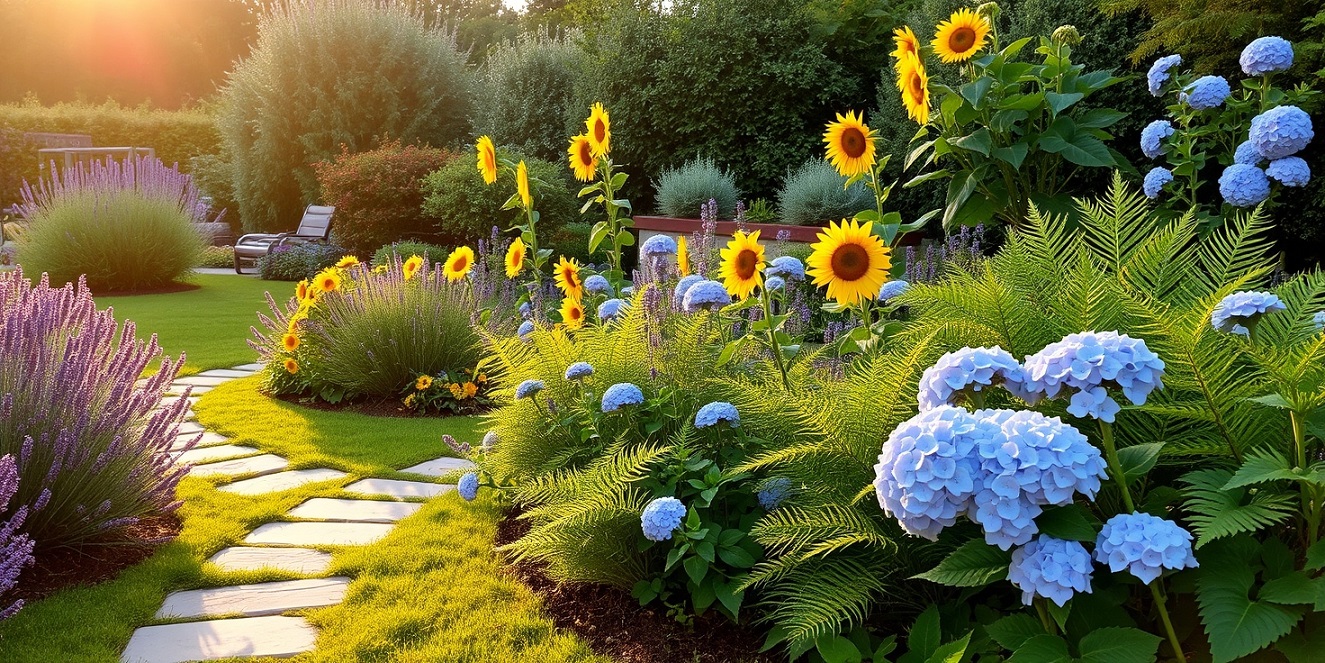When planning your garden, one of the most important factors to consider is how much sunlight each part of your yard receives. Some plants thrive in full sun, soaking up the rays all day long, while others prefer the cool relief of shade. Choosing the right plants for these conditions ensures healthy growth and saves you time and frustration. Here’s how to select the best plants for sunny or shady spots in your garden.
1. Best Plants for Full Sun Areas
If you have areas in your yard that receive 6 or more hours of direct sunlight daily, focus on plants that can handle the heat and bright light.
Top Picks for Full Sun Plants:
- Lavender: This fragrant herb thrives in full sun and well-drained soil, making it perfect for sunny borders or rock gardens.
- Sunflowers: These cheerful flowers not only love the sun but also attract pollinators like bees and butterflies.
- Sedum (Stonecrop): A hardy succulent that requires little water and produces vibrant blooms.
- Tomatoes and Peppers: For vegetable gardeners, these crops flourish in sunny spots and provide a delicious harvest.
Tip: Add a layer of mulch around full-sun plants to retain moisture and keep roots cool in hot weather.
2. Best Plants for Shady Areas
If parts of your garden are in shade for most of the day (less than 4 hours of direct sunlight), choose plants that thrive in lower light conditions.
Top Picks for Shade Plants:
- Hostas: Known for their lush, ornamental foliage, hostas are ideal for shady corners and garden beds.
- Ferns: These classic shade plants add texture and elegance to your garden, thriving in damp, low-light areas.
- Impatiens: Perfect for adding pops of color to shaded spots, impatiens bloom throughout the growing season.
- Hydrangeas: While some varieties can tolerate partial sun, hydrangeas love dappled shade and reward you with stunning blooms.
Tip: Make sure to water shade plants regularly, as they often compete for moisture in low-light conditions.
3. How to Identify Sunlight Levels in Your Yard
Before selecting plants, take time to observe how sunlight moves through your garden throughout the day.
- Full Sun: Areas that get direct sunlight for at least 6 hours daily.
- Partial Shade: Spots that receive 3-6 hours of sunlight, typically in the morning or late afternoon.
- Full Shade: Areas that get less than 3 hours of direct sunlight or are consistently shaded by trees, fences, or buildings.
Tip: Use a sunlight tracker app like Sun Surveyor or simply check your yard every 2-3 hours during the day to map out the sunlight patterns.
4. Combine Sun and Shade Plants for a Balanced Garden
To create a balanced and visually appealing garden, combine sun and shade plants in a way that complements your space.
- Place sun-loving plants like lavender or sedum in bright areas along pathways or borders.
- Fill shady corners with ferns, hostas, or hydrangeas for texture and depth.
- Use containers to grow versatile plants that can be moved to sunny or shaded areas as needed.
Tip: Mix heights, colors, and textures to add variety and interest to your garden design.
Final Thoughts
Choosing the right plants for full sun and shade is the key to creating a thriving, low-maintenance garden. By understanding the sunlight levels in your yard and selecting plants suited to those conditions, you’ll enjoy healthier, more vibrant blooms and greenery. Start small, experiment with different plants, and watch your garden flourish in every corner. 🌞🌳
